Welcome to my blog, where I delve into the intricate and fascinating world of temple architecture, and today I will be focusing on the beautiful Lakshmi Narsimha Temple in Nuggehalli, Karnataka, India. This stunning temple, dedicated to Lord Vishnu, is a prime example of the unique and elaborate Hoysala style of temple architecture, which flourished in Karnataka during the 11th to 14th centuries.
As I visited this beautiful temple, I was struck by the intricate carvings and sculptures on the walls and pillars, which depicted scenes from Sanatana epics and showcased the exceptional skill and craftsmanship of the local artisans. The temple’s distinct architectural features, such as the ornate ceiling, intricate cornices, and elaborately carved pillars, are all hallmarks of the Hoysala style of temple architecture, which is renowned for its intricate details and grandeur.

It is said that Hoysalas built more than 1000 temples all around Karnataka. Very few of them are still intact. Most of us (especially North Indians) have not even heard the name Hoysalas, and the fault primarily lies within our education system. Few among us, who know the name Hoysala, have very little or no information about them. And very few amongst them are lucky enough to visit the temples of Belur and Halebeedu. The rest of the temples are deserted. Apart from the local villagers and ASI-appointed guardians, no one wonders here. Today, we are visiting one such temple which will remind you about the legendary artisanship of our ancestors.
When you start traveling from Bangalore towards Mangalore, the small city of Chennarayapattana lies precisely in the middle of your journey. Leaving the Mangalore highway, the scenery changes drastically when you turn your car right and start driving to the North. Traveling about 16 kilometers, crossing tiny beautiful south Indian villages, you reach Nuggehalli. There lies this architectural gem Lakshmi Narsimha temple built during the rule of Hoysala King Someshwara.
Nuggehalli
Nugehhalli is a quiet village located in Hassan district of South Karnataka. Nuggehalli is the home of 5 ancient temples built in the 11th century. There are innumerous temples in India, which are well maintained by ASI, but very few amongst them are considered Live temples. Live temples are the ancient temples that ASI maintains, but Puja has been performed there for hundreds of generations. Nuggehalli Lakshmi Narsimha temple is one of such living 50 temples in India. Nuggehalli was part of Hoysala empire, and Vir Narayana was Agrahara. Agrahara means, income of that village is diverted towards the temple, and the educatonal systems ran by the temple.
Lakshmi Narsimha Temple


Bommanna Dandanayaka was Hoysala commander during the rein of King Vira Someshwara. The temple has a typical Vijaynagara styled entrance, with a granite structure and later-period brick-style roof. Temple is surrounded by a wall made up of granite, which will also remind you of Vijaynagara times.
Leave your footwear here, and walk inside the premises. You will be standing in front of a copper-made Vishnustambha, piercing through the roof made up with granite slabs. This granite roof is held aloof by Vijaynagara timed pillars. This construction depicts that the renovation of this temple must be done during the Vijaynagara kings.
This temple is a classic example of Trikutachala, a temple with three towers. One of which is built with the same soapstone by which the remaining temple has been created. Rest two smaller Vimanas are built during the Vijaynagara period, and hence clear difference can be seen here. It also said that this temple was a Keshava temple at first, and later, two other Sanctum Sanctorum were added, extending the temple by both sides. You will find a temple kitchen, a well, and two smaller shrines on the premises.
Leaving two elephants on each side, as you climb the stairs, you enter the actual temple. From here, you can see the Hoysala architecture.


Inside the Nuggehalli Lakshmi Narsimha Temple:
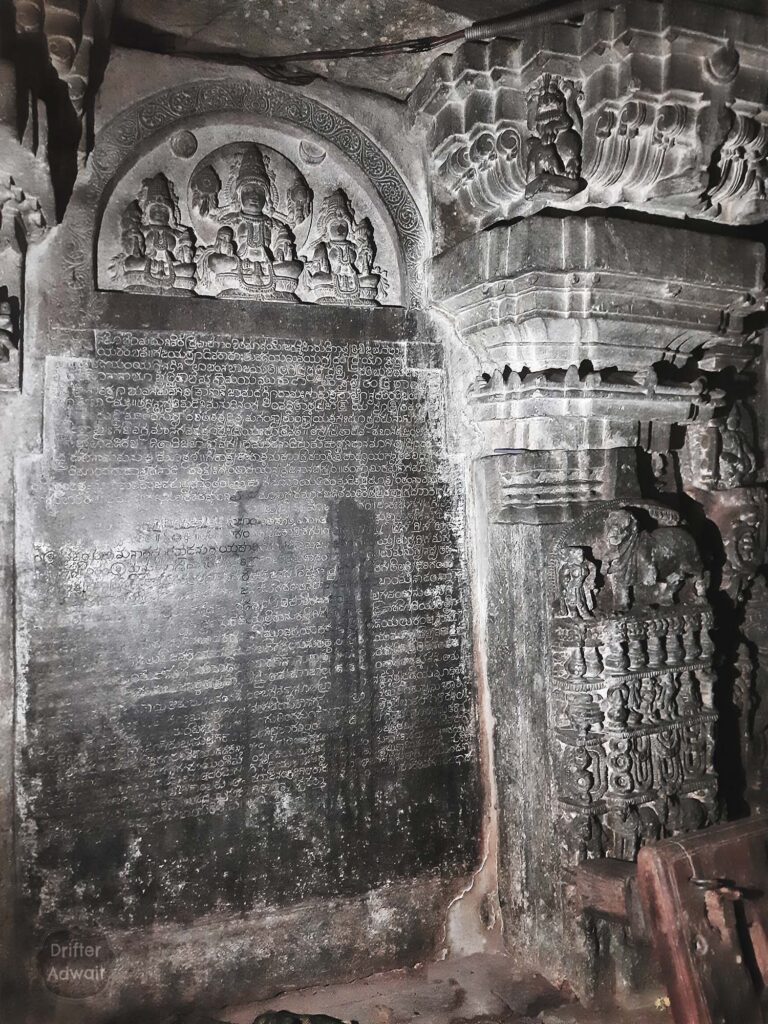
Just before the main sanctum sanctorum, you will find Hoysala era stone inscription stone and a beautifully ornate roof over your head. If you look closely, you will see Sun with his two powers Usha and Pratyusha, holding bow and arrow. Looking more carefully, you will even be able to see the seven horses of Surya deva with his chariot driver Aruna guiding the horses.

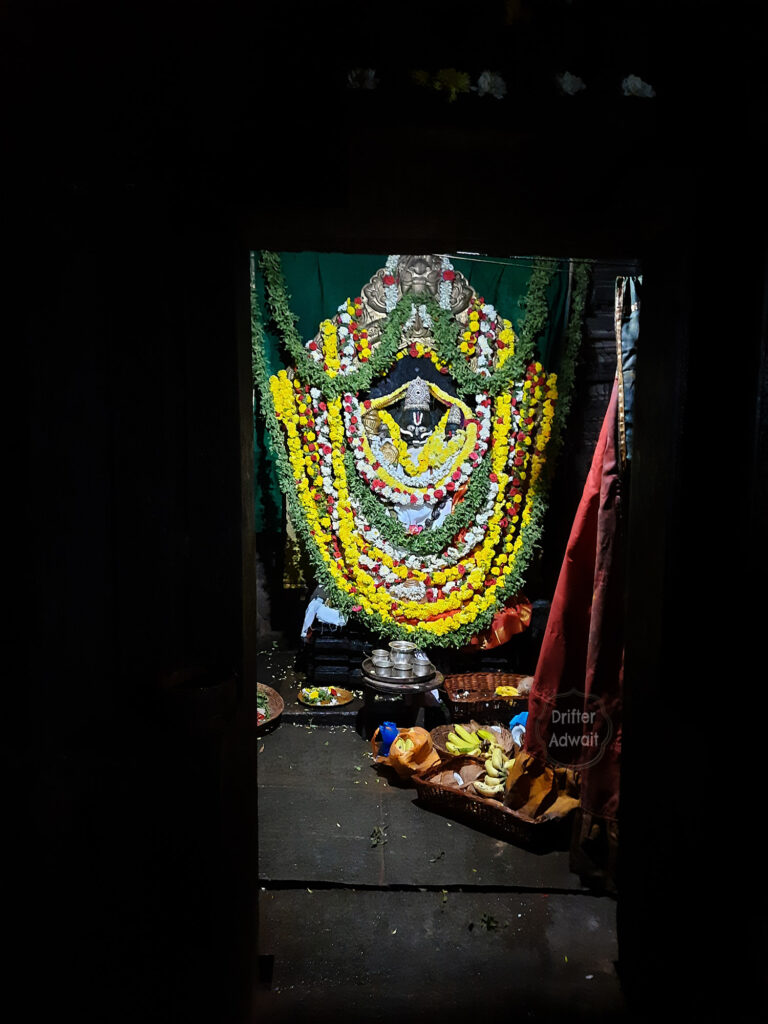
This temple is home to three main deities related to Vaishnavism. Apart from Lakshmi Narsimha, Lord Keshava and Venugopala stand here, blessing the devotees. This sanctorum roof is divided into equal parts, with each part decorated more beautifully than the other. Devotees have covered the Vigrahas completely with beautiful colorful flowers, just enough to show their faces to us. Nevertheless, the environment, the mixed fragrance of Panchamrit, essence, and coconut carried us to when this temple used to be a center for Dharma and education. A dark yet peaceful environment will make you sit there, railing on one of the ornate pillars carved out of the black soapstone, enjoying the calmness around you. It will soothe your mind. After sitting there for a while, bow to playful yet mischievous Venugopala, bow down to the wise Lord Keshava, salute to the ferocious Lakshmi Narasimha, and get out of the Sanctorum.
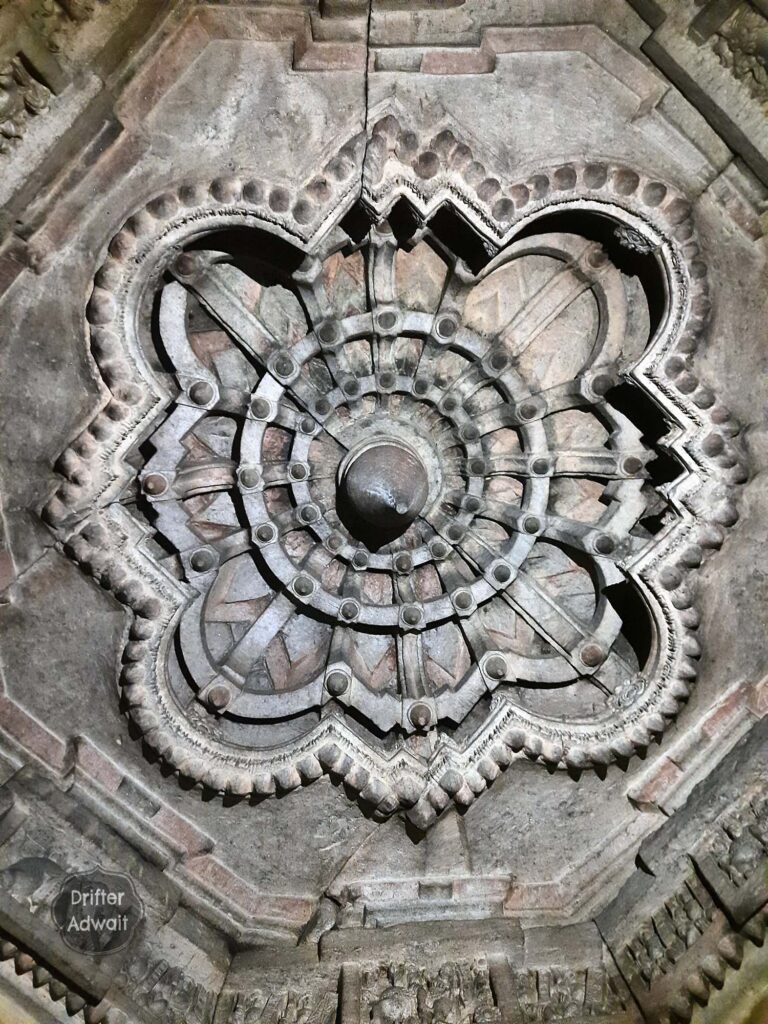


Outer walls of Nuggehalli Lakshmi Narsimha Temple:

Hoysalas were expert craftsmen known for their sculptures on the outer walls of the temple. Standing on a Jagati, or platform, this temple has one of the most beautiful exterior walls, divided into several layers. The first layer is decorated with almost a feet tall elephants. These half feet tall elephants represent the stability of the Hoysala empire. Even though there are hundreds of elephants at the lower layer, it is said that no one elephant matches the other.
The second layer is decorated with horse riders, representing speed and courage. Same as the elephants, even not a single horse has repeated anywhere on this layer. You will find some minor differences between the two horses. The third layer is made up of vines and foliage, showing the prosperity of the temple.

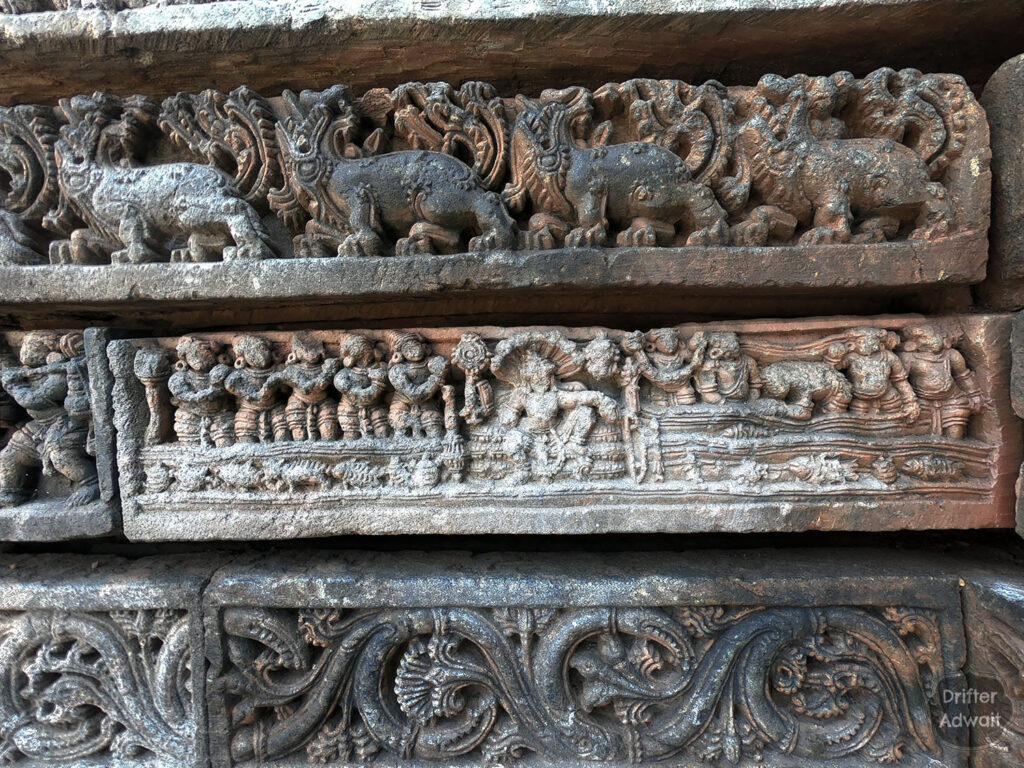
The fourth smaller layer is decorated with various incidences from epics like Mahabharata, Ramayana, and Puranas. We have to take our sweet time here to identify the incidence which is shown in this strip. Most of them are either damaged by the invaders or by the natural elements. We have stopped reading our ancient scriptures as well, and these three factors contribute to our failure to recognize most of the incidences from this layer. The fifth layer of the temple is decorated with the Makara. Makara represents the ideal soldier. The small layer above that is crowded with Hamsa birds with their magnificent beauty.
Then comes the three feet tall panel strip surrounding the entire temple. This could be the main attraction of the temple. This layer has been ornate by rectangular panels of various deities.

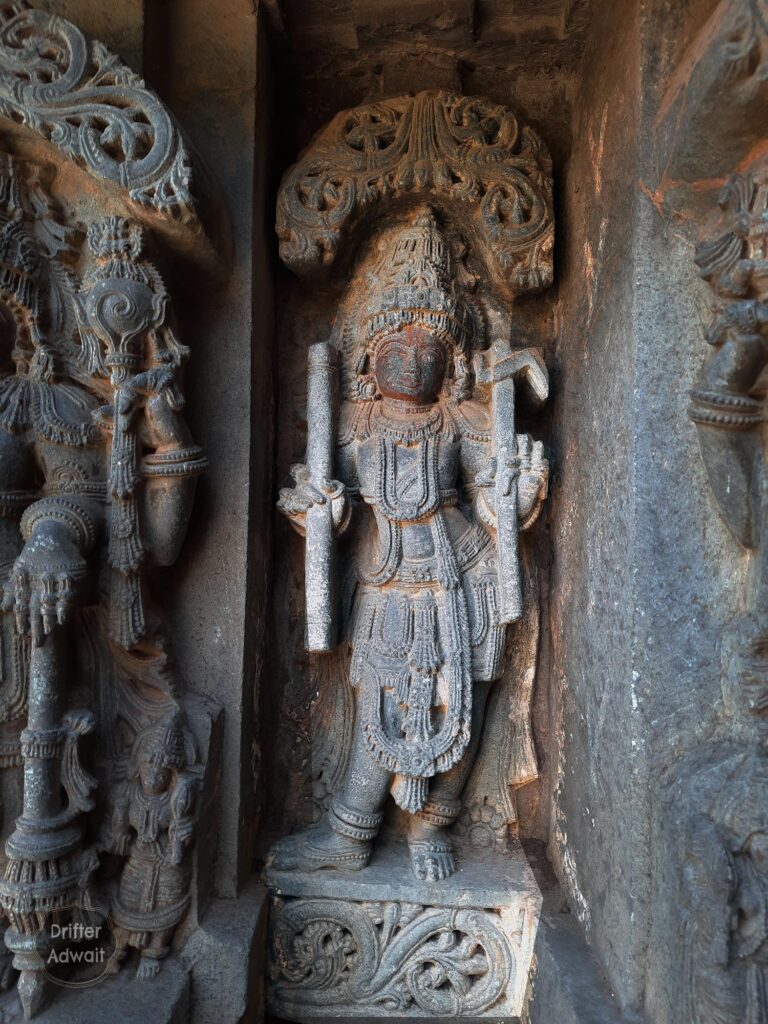
How to reach Nuggehalli?
? By Car: Nuggehalli is about 140 Kilometers from Bengaluru. Driving on state highway 75, take a right turn at village Hirisave. Nuggehalli will be 25 Kms.
? Bus: Get a bus for Hassan or Chennarayapattana. From there, you can book a private auto or cab to reach Nuggehalli.
? Train: Nearest railway station to Nuggehalli is Chennarayapattana, which is about 19 km from the temple.
✈️ Air: The nearest airport is Bengaluru, which is approximately 170 km from the Nuggehalli temple.
Where to stay at Nuggehalli?
?️ Nuggehalli is a small village. You won’t find any hotels here. There will be plenty of options available at Chennarayapattana or in Hassan city.
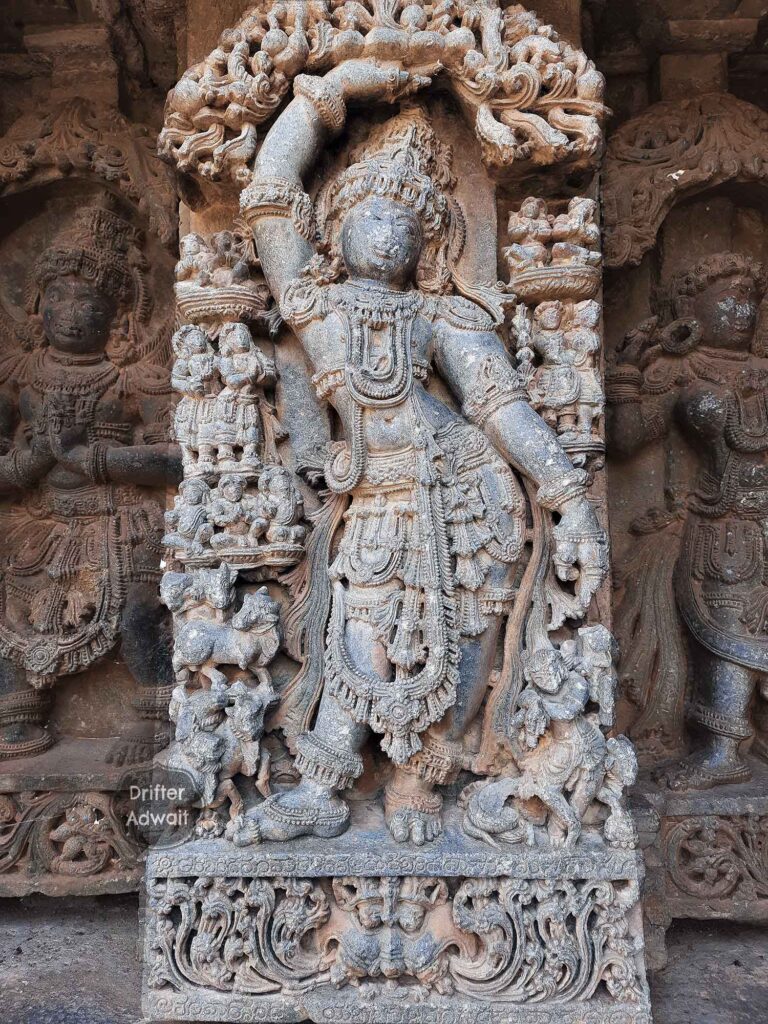
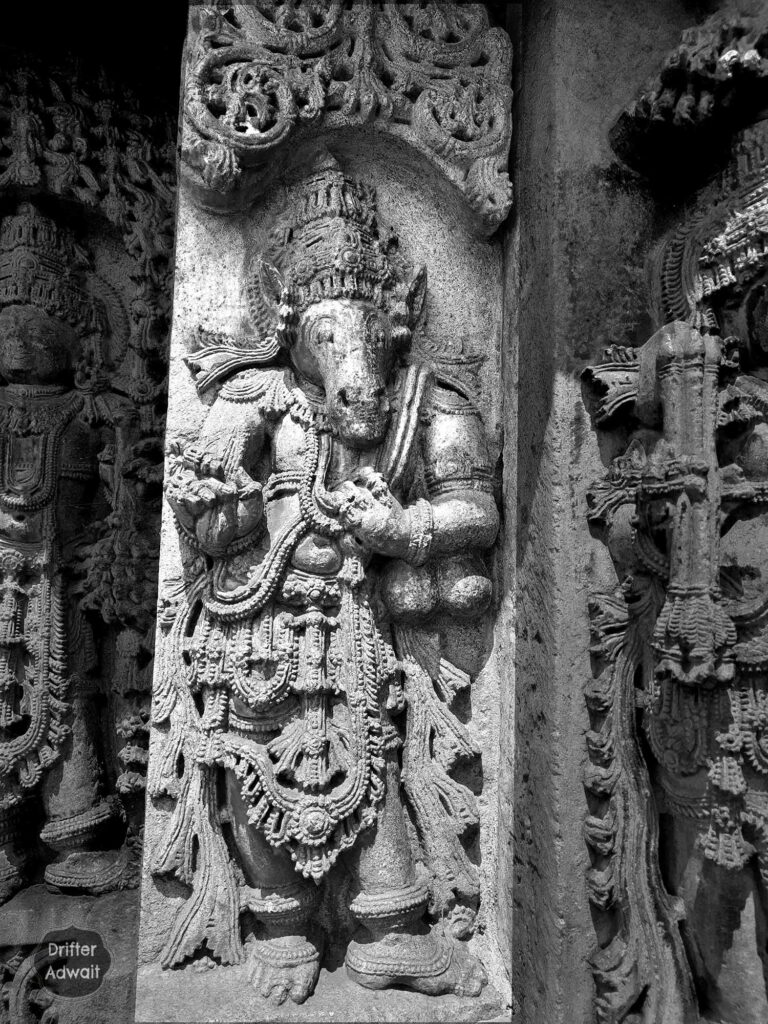





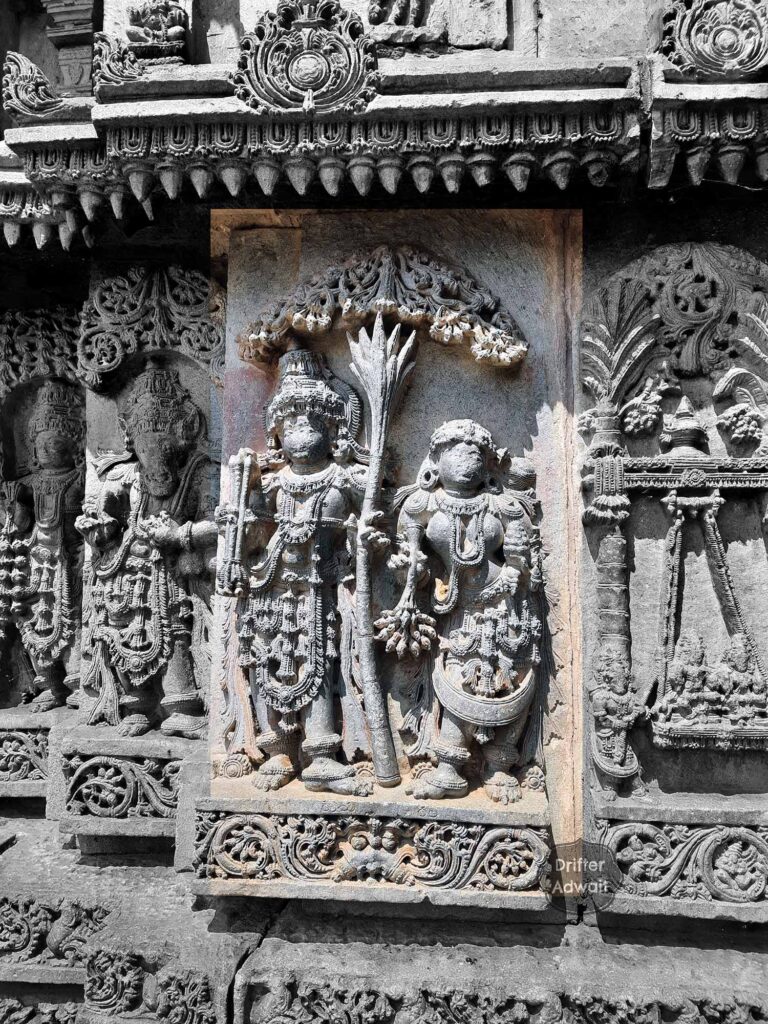

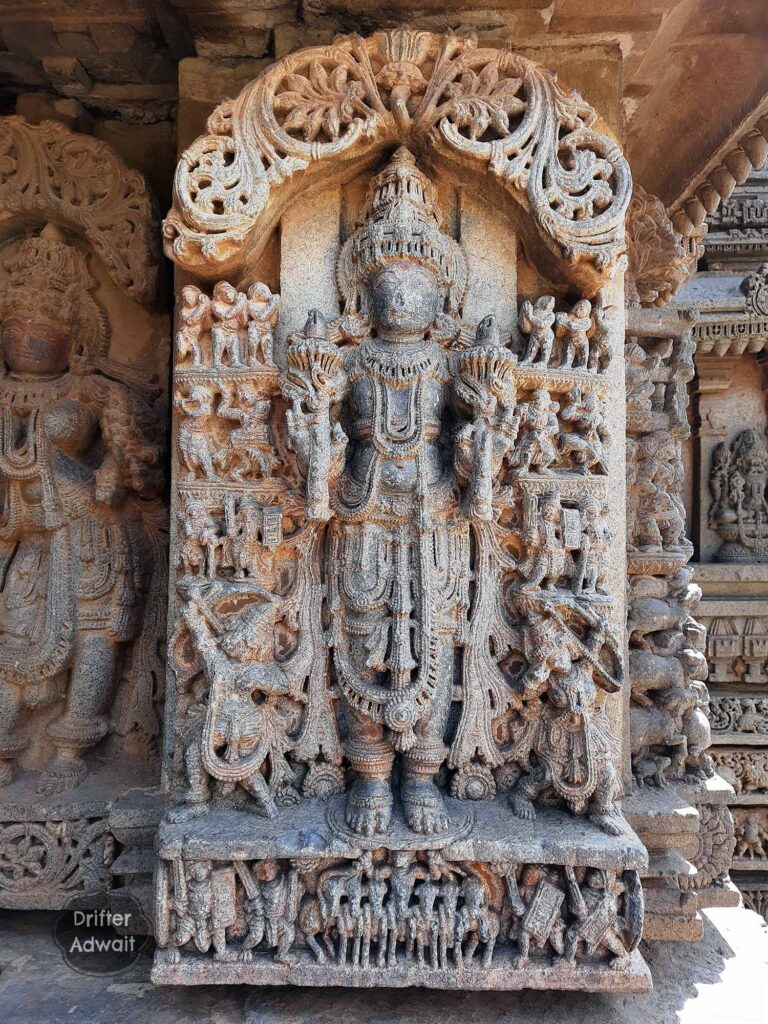




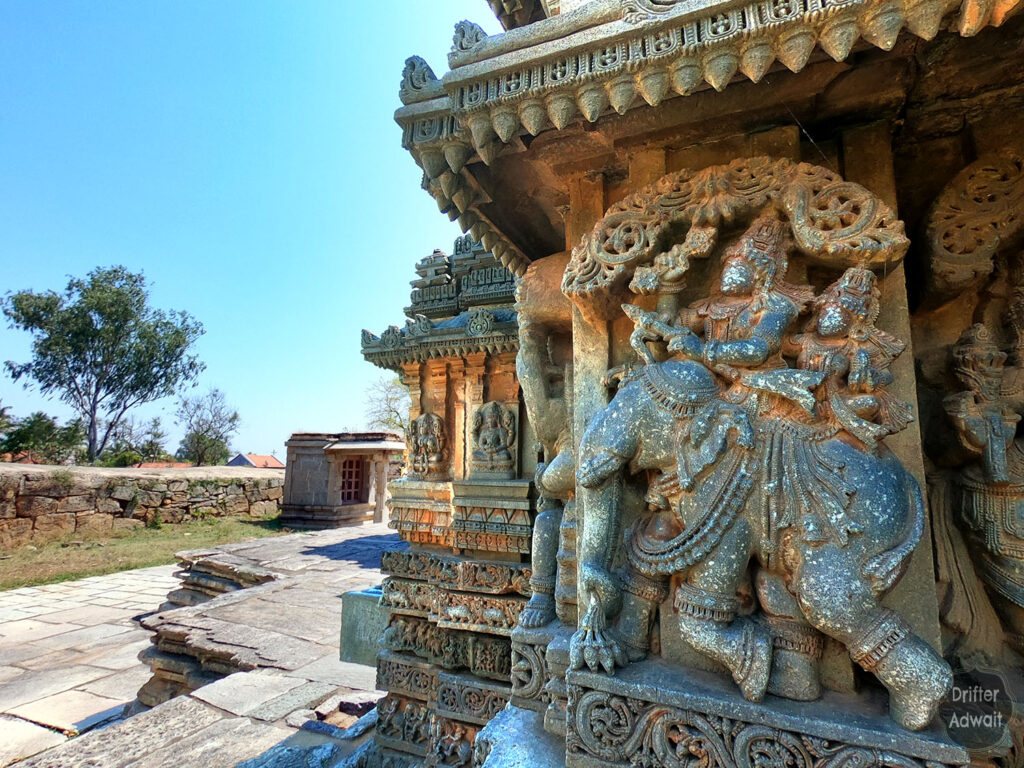
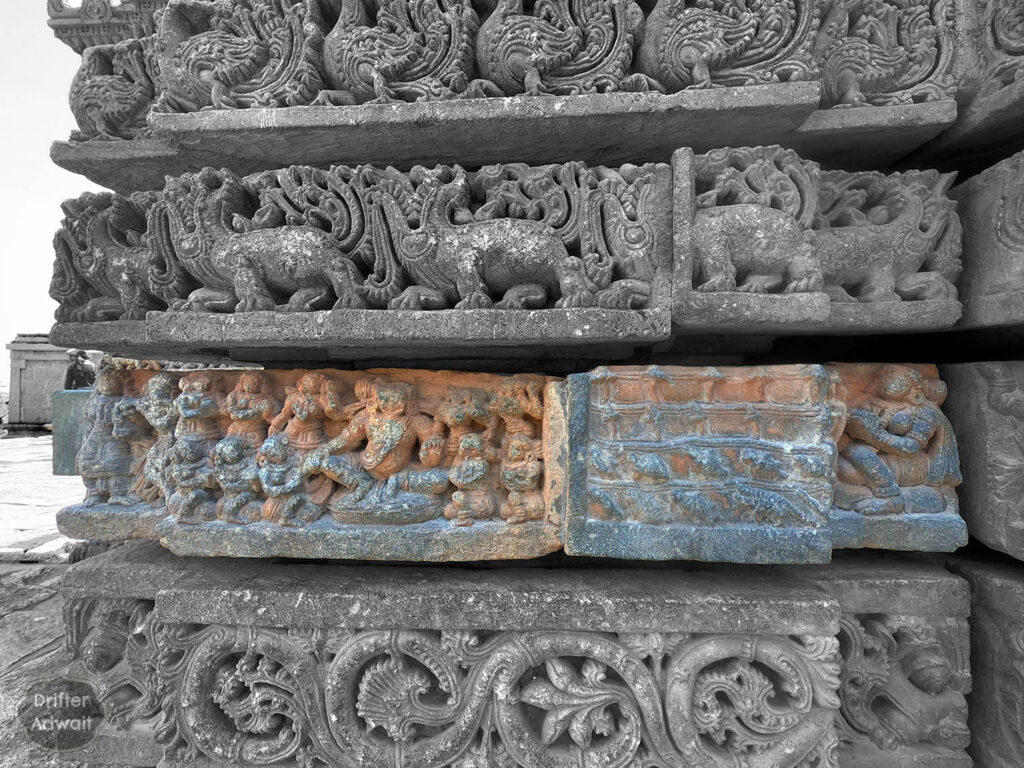









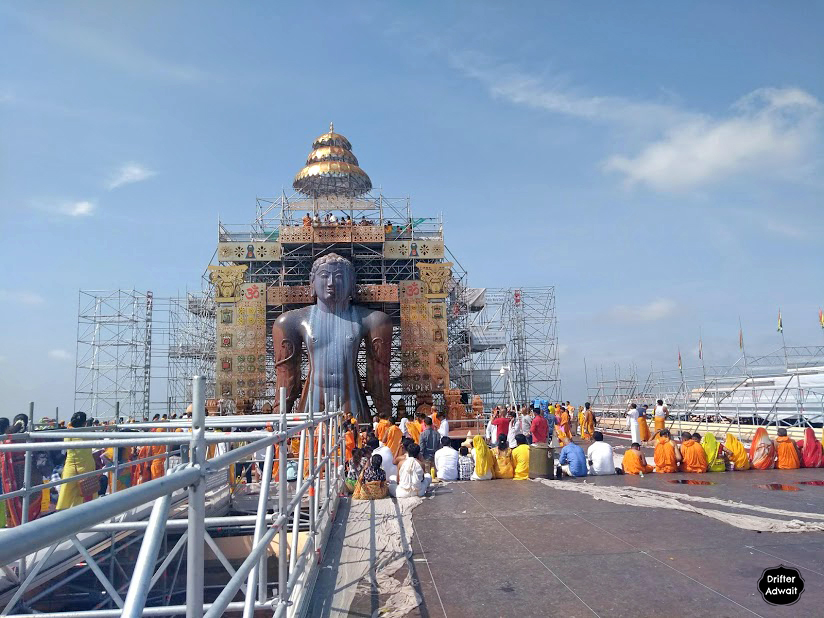
Excellent information. so beautiful. Thank you for sharing.
Thank you Jyoti Ji for reading the blog. Please visit this marvelous temple at least once.
Very nice and useful information. Thanks….
Keep posted us…
Thank you Chinmay Ji. I am glad you liked the information. Please share your thoughts on my other blog posts as well.
I’m impressed to see and read the post on this temple. I will try to go there whenever possible
Well done and keep it up ! Pl send your other posts to me.
Thank you sir, for the kind words. Just doing our duty to spread the word of our glorious ancestors. I will send rest of my post to you sir.